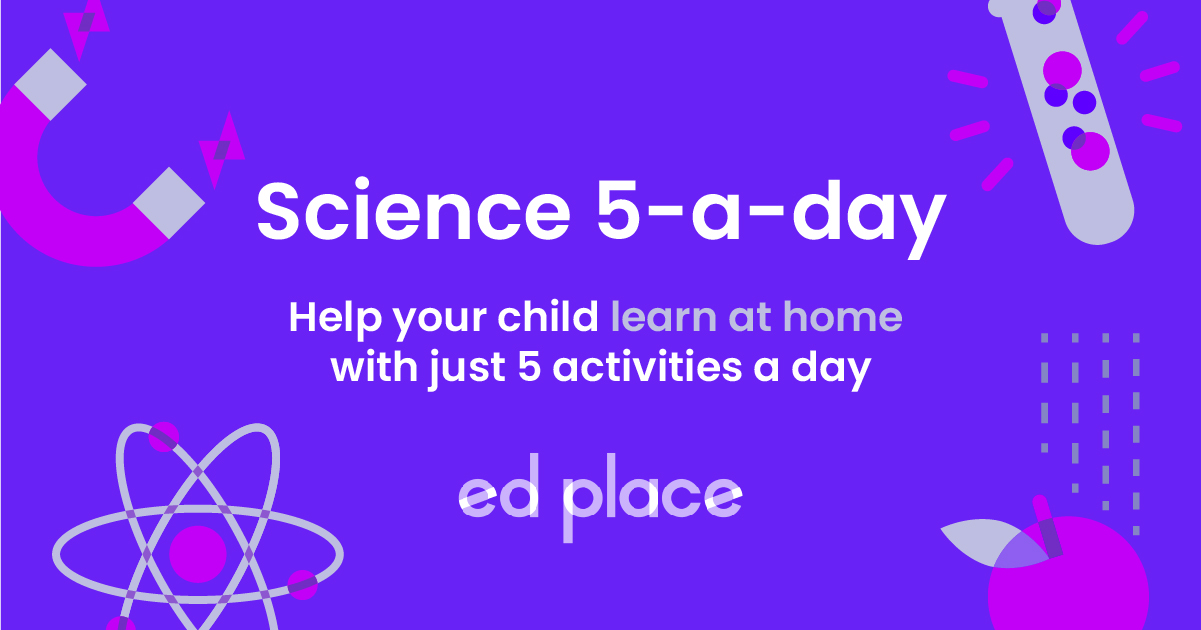
EdPlace's Year 9 Home Learning Science Lesson: Plant Reproduction
Looking for short lessons to keep your child engaged and learning? Our experienced team of teachers have created English, maths and science lessons for the home, so your child can learn no matter where they are. And, as all activities are self-marked, you really can encourage your child to be an independent learner.
Get them started on the lesson below and then jump into our teacher-created activities to practice what they've learnt. We've recommended five to ensure they feel secure in their knowledge - 5-a-day helps keeps the learning loss at bay (or so we think!).
Are they keen to start practising straight away? Head to the bottom of the page to find the activities.
Now...onto the lesson!
Plants Reproduce, Fruits Ripen... But How Does This All Happen?
Now that spring has well and truly sprung, it's a great time to get out into nature and put your science knowledge into action – so let's take a whistle-stop tour through the structure of a flower, look at how plants reproduce and find out how the seeds you might be planting around now turn into plants. And once you have refreshed your understanding of these things, you can use it as an excuse to get outside and see the magic happening in front of your very eyes.
Understanding plant reproduction can be a challenging topic for students, but it's worth planting the seed and consolidating over time.
By the end of this 5-step approach we’re confident that your child will be able to:
1) Understand how plants reproduce
2) Identify each part of the plant
3) Explain how dispersal takes place and why
Step 1: Testing Terminology
There are quite a lot of keywords associated with plant reproduction, which is one of the reasons why some students find this topic a bit tricky. In this topic, we will not only be looking at vocabulary associated with the process of reproduction but also the specific names for parts of a plant. It's really important to start with the language and make sure that your child is confident with the keywords and what they mean. Once they're happy with this, there'll be no stopping them!
Sepals: protect the unopened flower
Petals: may be brightly coloured to attract insects
Stamens: male parts of the flower (each consists of an anther held up on a filament)
Anthers: produce male sex cells - pollen grains
Pollen grain: produced in the anthers of a flower that contains the male gamete
Stigma: top of the female part of the flower which collects pollen grains
Ovary: part of the female reproductive tissue in plants, contains the ovule
Ovule: structure that contains a female gamete.
Fertilisation: The joining of a male and female gamete.
Gamete: Sex cell (sperm in males and ova/eggs in females)
Pollination: The fertilisation of flowers by passing on their pollen
Step 2: How Do Plants Reproduce?
You may remember a few bits and bobs about plant reproduction, but here are the basics just to bring you up to speed before we move on….
Flowering plants reproduce in various ways – they are mainly helped by either insects or the wind. Pollen is carried by insects or blown by the wind from one flower to another. This process is called pollination.
When the pollen, which is the male sex cell (the sperm of the plant world if you like!) reaches the new flower it travels to the female part of the flower called the ovary where it fertilises ovules (egg cells) to make seeds. This process is called fertilisation.
The seeds are scattered by animals or the wind. This process is called dispersal. Some of the seeds will grow into new plants and restart the whole process again.
Step 3: Pollination and Fertilisation
Flowering plants have a general structure. They will all look slightly different, but here's something to get your child started.
Why not look at some different flowers in your garden, cut them in half and try and identify the different structures labelled in the diagram?
So let's now look into each of these processes in a bit more detail.
Pollination
Pollen is moved from the anther of one flower to the stigma of another in one of two ways – on the backs of insects, or blown by the wind. Insect pollinated flowers look very different from wind-pollinated flowers, as they have adapted to transferring and receiving the pollen in this specific way. Here's how you can tell if a flower is wind or insect-pollinated:
| Features of a plant |
Insect pollinated |
Wind pollinated |
|
Brightly coloured petals? |
Yes – to attract insects |
No – not needed |
|
Scented? |
Yes, with nectar – to attract insects |
No – not needed |
|
Lots of pollen grains produced? |
No, just a few – insect transfer is very efficient |
Yes – most are lost in transit |
|
Male part (anther) inside or outside flower? |
Inside – to brush against insects as they feed on nectar deep inside |
Outside – to release pollen easily |
|
Female part (stigma) inside or outside flower? |
Inside - to brush against insects and receive pollen grains as they feed on nectar deep inside |
Outside – to catch drifting pollen grains easily |
Fertilisation
If a pollen grain (the male gamete remember) successfully lands on the stigma of a flower of the correct species, it will trigger a pollen tube to grow through the tissues of the flower until it reaches an ovule (the female gamete) inside the ovary. Once it reaches the ovary, the nucleus of the pollen grain joins with the nucleus of the ovule. This is fertilisation. The fertilised egg develops into a seed.
Dispersal
Once the seeds have been made, they need to be dispersed, or spread, away from each other and from the parent plant. This is so that they don’t have to compete for food, light and space with each other. So there are some really nifty ways that plants disperse their seeds:
1) Wind e.g. dandelion
2) On the inside of animals when they are eaten (and then make an appearance via the insects digestive system!) e.g. fruits like raspberries, tomatoes, grapes
3) Stick to the outside of animals fur e.g. goosegrass
4) Self-propelled (have a seed pod that bursts open when they are ripe or when they are touched) e.g. pea pods, Violets, poisonous squirting cucumbers, and touch-me-nots or Impatiens capensis
If you’ve not seen self-propelled seeds at work before, search for videos of them, they are really cool!
Now is a great time of year to see lots of plants dispersing their seeds. Why not go and find a dandelion and help it out by blowing it to disperse its seeds?
Step 4: Have a Go at Some Questions
By now, hopefully you and your child are experts on all things plant-related! So, let's put your knowledge to the test and check out your understanding.
1) Suggest which method of seed dispersal the following plants utilise.
a)
b)
c)
d)
2) Describe the steps that take place once a pollen grain successfully lands on a stigma.
3) Are these sunflowers likely to be wind or insect-pollinated? Explain your answer.
4) Label each part of the flower below (there are 10 in total).
Step 5: Let's apply your knowledge
Now, you’ve covered this together why not put this to the test and assign your child the following 5 activities in the following order.
All activities are created by teachers and automatically marked. Plus, with an EdPlace subscription, we can automatically progress your child at a level that's right for them. Sending you progress reports along the way so you can track and measure progress, together - brilliant!
Activity 1 - Pollination and Fertilisation
Activity 2 - Growing Pollen Tubes
Activity 3 - Understand Wind and Insect Pollination Fertilisation
Activity 4 - Identify the Parts of a Flower Involved in Reproduction
Activity 5 - Understand Seed and Fruit Formation and Dispersal
Answers
1a) Animal fur
b) Wind
c) Self propelled
d) Wind
2) A pollen tube is triggered to grow down through the flower until it reaches an ovule (the female gamete) inside the ovary.
The nucleus of the pollen grain joins with the nucleus of the ovule.
This is called fertilisation.
The fertilised egg develops into a seed.
3) Insect. They have large colourful petals to attract insects.
4) 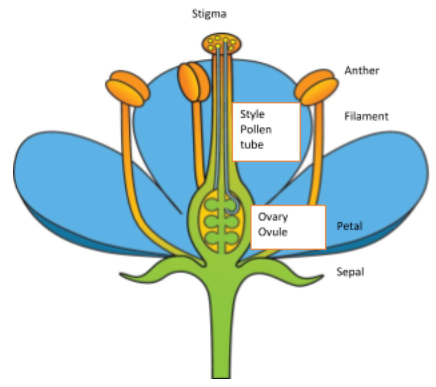
Keep going! Looking for more activities, different subjects or year groups?
Click the button below to view the EdPlace English, maths, science and 11+ activity library

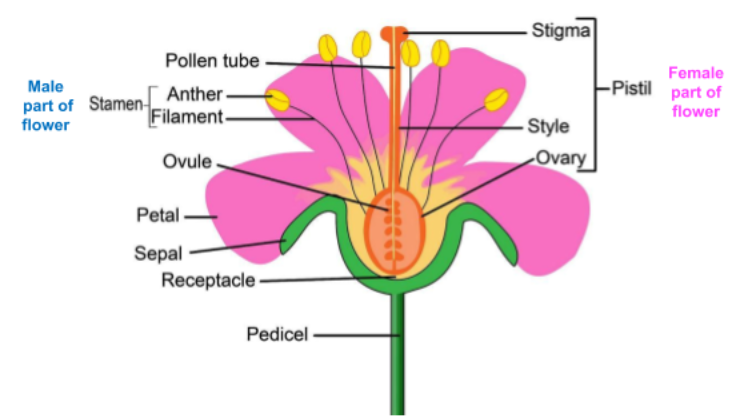
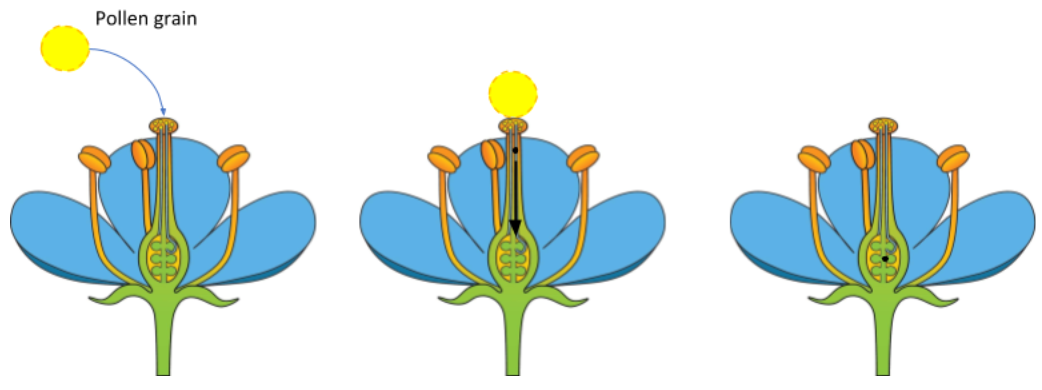
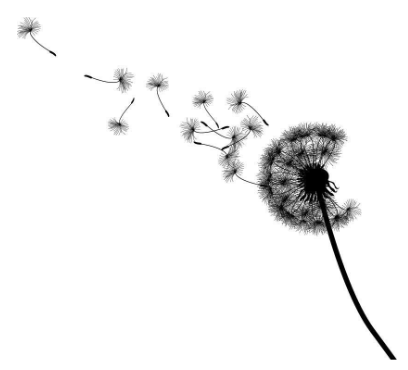
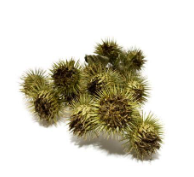
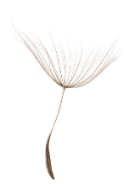
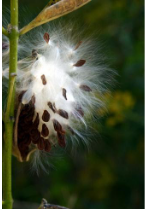
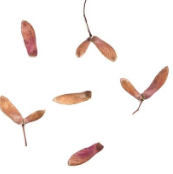
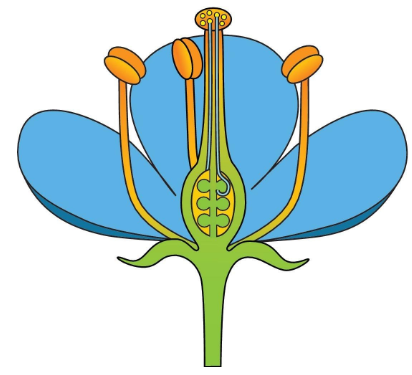
.jpg)






